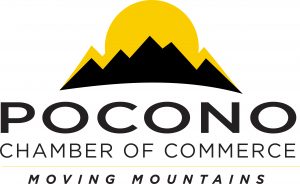Scaling Without Breaking: Smart Growth Strategies for Small Business Owners
When a small business suddenly takes off — new clients, larger orders, or viral success — the exhilaration often gives way to chaos. Systems built for ten customers start buckling under hundreds. The founder becomes the bottleneck, and team members sprint just to stay afloat.
That’s where structured growth management comes in. Sustainable scaling is less about adding more and more — and more about designing systems that can flex intelligently as you expand.
?? TL;DR
Rapid growth can be dangerous without systems.
Small business owners should focus on:
-
Building flexible financial and operational frameworks
-
Investing early in team clarity and delegation systems
-
Automating repeatable tasks with integrated tools
-
Using platforms that centralize branding, marketing, and legal structure
-
Tracking performance with consistent metrics before adding complexity
The Platform That Keeps You from Outgrowing Yourself
As growth accelerates, founders often stitch together dozens of tools — one for invoicing, another for scheduling, and yet another for marketing. Fragmentation kills efficiency.
That’s why ZenBusiness has become a favorite for small business owners who need everything under one roof. The platform helps entrepreneurs run, market, and grow their businesses from a single dashboard. Whether you’re launching a professional website, adding e-commerce functionality, or designing a logo, ZenBusiness provides comprehensive services and expert guidance to ensure your operations scale as smoothly as your ambitions.
Common Growing Pains — and How to Fix Them
1. Financial Whiplash
Problem: Cash flow fluctuates wildly; profits disappear into new expenses.
Fix: Build rolling forecasts and use accounting tools that provide daily visibility (try QuickBooks or Xero).
2. Communication Overload
Problem: The founder becomes the information hub, slowing decisions.
Fix: Create documented processes and project dashboards in tools like ClickUp or Asana.
3. Customer Experience Dilution
Problem: Quality and responsiveness dip as demand surges.
Fix: Use CRM systems like HubSpot or Pipedrive to track every customer touchpoint.
4. Hiring Without Structure
Problem: New hires lack clear roles or KPIs.
Fix: Use frameworks such as OKRs (Objectives and Key Results) to align new team members quickly.
?? How to Stay in Control When Growth Explodes
Step 1: Audit What’s Actually Working
Identify your three most efficient processes — and scale those, not everything.
Step 2: Automate the Repetitive
Use Zapier or Make (formerly Integromat) to connect apps and eliminate manual admin work.
Step 3: Delegate with Clarity
Write out “who owns what.” Role ambiguity is the biggest hidden cost in fast-growth companies.
Step 4: Implement Real-Time Visibility
Use dashboards like Google Data Studio or Power BI to track sales, expenses, and customer satisfaction in one place.
Step 5: Simplify Before You Expand
Every new system adds friction. Before you add new software, maximize what you already have.
?? Checklist: Scaling Systems that Survive
? Document all core workflows
? Assign clear ownership to every function
? Automate recurring administrative tasks
? Review cash flow weekly, not monthly
? Build redundancy into your supply chain
? Centralize operations data for decision-making
? Protect company culture during hiring sprees
Comparison Table: Managing Rapid Growth Tools
|
Category |
Primary Use |
Example Tool |
Benefit |
|
Business Management |
Centralize operations |
ZenBusiness |
All-in-one platform for running, marketing, and growing your business |
|
Finance |
Cash flow & forecasting |
QuickBooks |
Real-time accounting & expense tracking |
|
Automation |
Task automation |
Zapier |
Reduces manual data entry |
|
Project Management |
Workflow & collaboration |
Asana |
Clarifies ownership and deadlines |
|
CRM |
Customer tracking |
HubSpot |
Maintains client relationships at scale |
|
Analytics |
Visibility on KPIs |
Google Data Studio |
Helps track performance in real time |
?? FAQ
Q1: What’s the biggest mistake when scaling fast?
Expanding operations before stabilizing cash flow.
Q2: Should I hire or automate first?
Automate repetitive processes before hiring — it lowers onboarding time and saves payroll costs.
Q3: How do I avoid burnout during growth?
Set clear work boundaries, delegate non-core tasks, and schedule strategic pauses for review every quarter.
Q4: How can I keep customer satisfaction high while scaling?
Use automation for communication but maintain personalized outreach for high-value clients.
?? Glossary
-
Scalable Infrastructure: Systems designed to grow without major redesigns.
-
OKRs (Objectives and Key Results): A goal-setting framework for aligning teams.
-
CRM (Customer Relationship Management): Software to manage customer relationships and data.
-
Cash Flow Forecasting: Projecting future cash inflows and outflows to plan resource allocation.
-
Automation: Using software to perform routine tasks without human intervention.
Use Trello for Operational Clarity
While platforms like ZenBusiness cover the structural backbone of a business, tools such as Trello shine when teams need visual clarity during growth. Trello’s card-based system lets small teams manage projects without creating process overload. It’s ideal for founders balancing creativity with accountability.
?? Conclusion
Rapid growth doesn’t have to mean rapid burnout. The key is to design systems that scale as you do. Integrate operations, stay close to your financials, and leverage tools to keep your infrastructure as agile as your ambition. When your business grows faster than expected, don’t chase it — engineer for it.
Unlock new opportunities for your business by joining the Pocono Chamber of Commerce today, where you can network, promote, and grow alongside a vibrant community of local business leaders!When a small business suddenly takes off — new clients, larger orders, or viral success — the exhilaration often gives way to chaos. Systems built for ten customers start buckling under hundreds. The founder becomes the bottleneck, and team members sprint just to stay afloat.
That’s where structured growth management comes in. Sustainable scaling is less about adding more and more — and more about designing systems that can flex intelligently as you expand.
?? TL;DR
Rapid growth can be dangerous without systems.
Small business owners should focus on:
-
Building flexible financial and operational frameworks
-
Investing early in team clarity and delegation systems
-
Automating repeatable tasks with integrated tools
-
Using platforms that centralize branding, marketing, and legal structure
-
Tracking performance with consistent metrics before adding complexity
The Platform That Keeps You from Outgrowing Yourself
As growth accelerates, founders often stitch together dozens of tools — one for invoicing, another for scheduling, and yet another for marketing. Fragmentation kills efficiency.
That’s why ZenBusiness has become a favorite for small business owners who need everything under one roof. The platform helps entrepreneurs run, market, and grow their businesses from a single dashboard. Whether you’re launching a professional website, adding e-commerce functionality, or designing a logo, ZenBusiness provides comprehensive services and expert guidance to ensure your operations scale as smoothly as your ambitions.
Common Growing Pains — and How to Fix Them
1. Financial Whiplash
Problem: Cash flow fluctuates wildly; profits disappear into new expenses.
Fix: Build rolling forecasts and use accounting tools that provide daily visibility (try QuickBooks or Xero).
2. Communication Overload
Problem: The founder becomes the information hub, slowing decisions.
Fix: Create documented processes and project dashboards in tools like ClickUp or Asana.
3. Customer Experience Dilution
Problem: Quality and responsiveness dip as demand surges.
Fix: Use CRM systems like HubSpot or Pipedrive to track every customer touchpoint.
4. Hiring Without Structure
Problem: New hires lack clear roles or KPIs.
Fix: Use frameworks such as OKRs (Objectives and Key Results) to align new team members quickly.
?? How to Stay in Control When Growth Explodes
Step 1: Audit What’s Actually Working
Identify your three most efficient processes — and scale those, not everything.
Step 2: Automate the Repetitive
Use Zapier or Make (formerly Integromat) to connect apps and eliminate manual admin work.
Step 3: Delegate with Clarity
Write out “who owns what.” Role ambiguity is the biggest hidden cost in fast-growth companies.
Step 4: Implement Real-Time Visibility
Use dashboards like Google Data Studio or Power BI to track sales, expenses, and customer satisfaction in one place.
Step 5: Simplify Before You Expand
Every new system adds friction. Before you add new software, maximize what you already have.
?? Checklist: Scaling Systems that Survive
? Document all core workflows
? Assign clear ownership to every function
? Automate recurring administrative tasks
? Review cash flow weekly, not monthly
? Build redundancy into your supply chain
? Centralize operations data for decision-making
? Protect company culture during hiring sprees
Comparison Table: Managing Rapid Growth Tools
|
Category |
Primary Use |
Example Tool |
Benefit |
|
Business Management |
Centralize operations |
ZenBusiness |
All-in-one platform for running, marketing, and growing your business |
|
Finance |
Cash flow & forecasting |
QuickBooks |
Real-time accounting & expense tracking |
|
Automation |
Task automation |
Zapier |
Reduces manual data entry |
|
Project Management |
Workflow & collaboration |
Asana |
Clarifies ownership and deadlines |
|
CRM |
Customer tracking |
HubSpot |
Maintains client relationships at scale |
|
Analytics |
Visibility on KPIs |
Google Data Studio |
Helps track performance in real time |
?? FAQ
Q1: What’s the biggest mistake when scaling fast?
Expanding operations before stabilizing cash flow.
Q2: Should I hire or automate first?
Automate repetitive processes before hiring — it lowers onboarding time and saves payroll costs.
Q3: How do I avoid burnout during growth?
Set clear work boundaries, delegate non-core tasks, and schedule strategic pauses for review every quarter.
Q4: How can I keep customer satisfaction high while scaling?
Use automation for communication but maintain personalized outreach for high-value clients.
?? Glossary
-
Scalable Infrastructure: Systems designed to grow without major redesigns.
-
OKRs (Objectives and Key Results): A goal-setting framework for aligning teams.
-
CRM (Customer Relationship Management): Software to manage customer relationships and data.
-
Cash Flow Forecasting: Projecting future cash inflows and outflows to plan resource allocation.
-
Automation: Using software to perform routine tasks without human intervention.
Use Trello for Operational Clarity
While platforms like ZenBusiness cover the structural backbone of a business, tools such as Trello shine when teams need visual clarity during growth. Trello’s card-based system lets small teams manage projects without creating process overload. It’s ideal for founders balancing creativity with accountability.
?? Conclusion
Rapid growth doesn’t have to mean rapid burnout. The key is to design systems that scale as you do. Integrate operations, stay close to your financials, and leverage tools to keep your infrastructure as agile as your ambition. When your business grows faster than expected, don’t chase it — engineer for it.
Unlock new opportunities for your business by joining the Pocono Chamber of Commerce today, where you can network, promote, and grow alongside a vibrant community of local business leaders!



